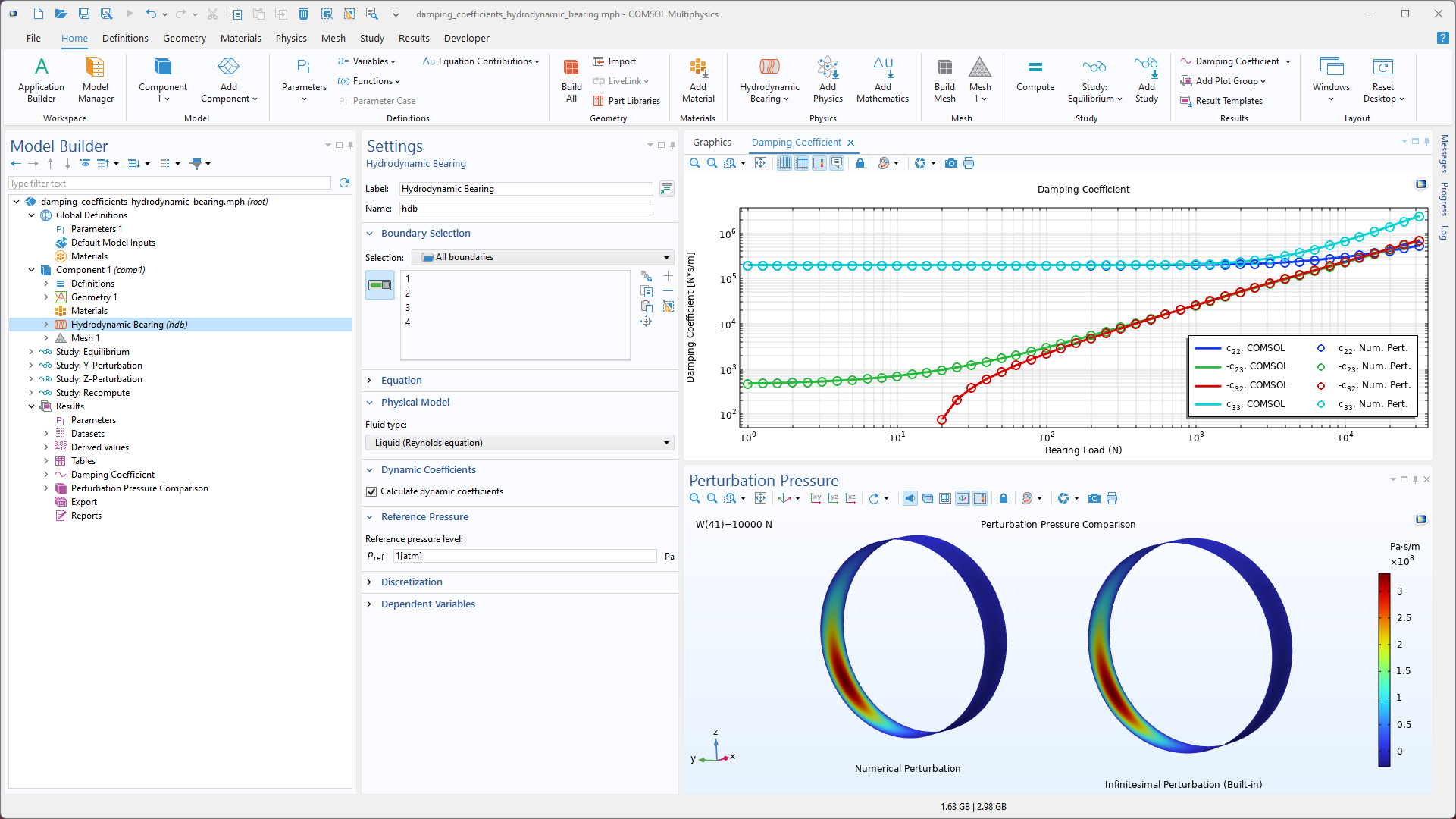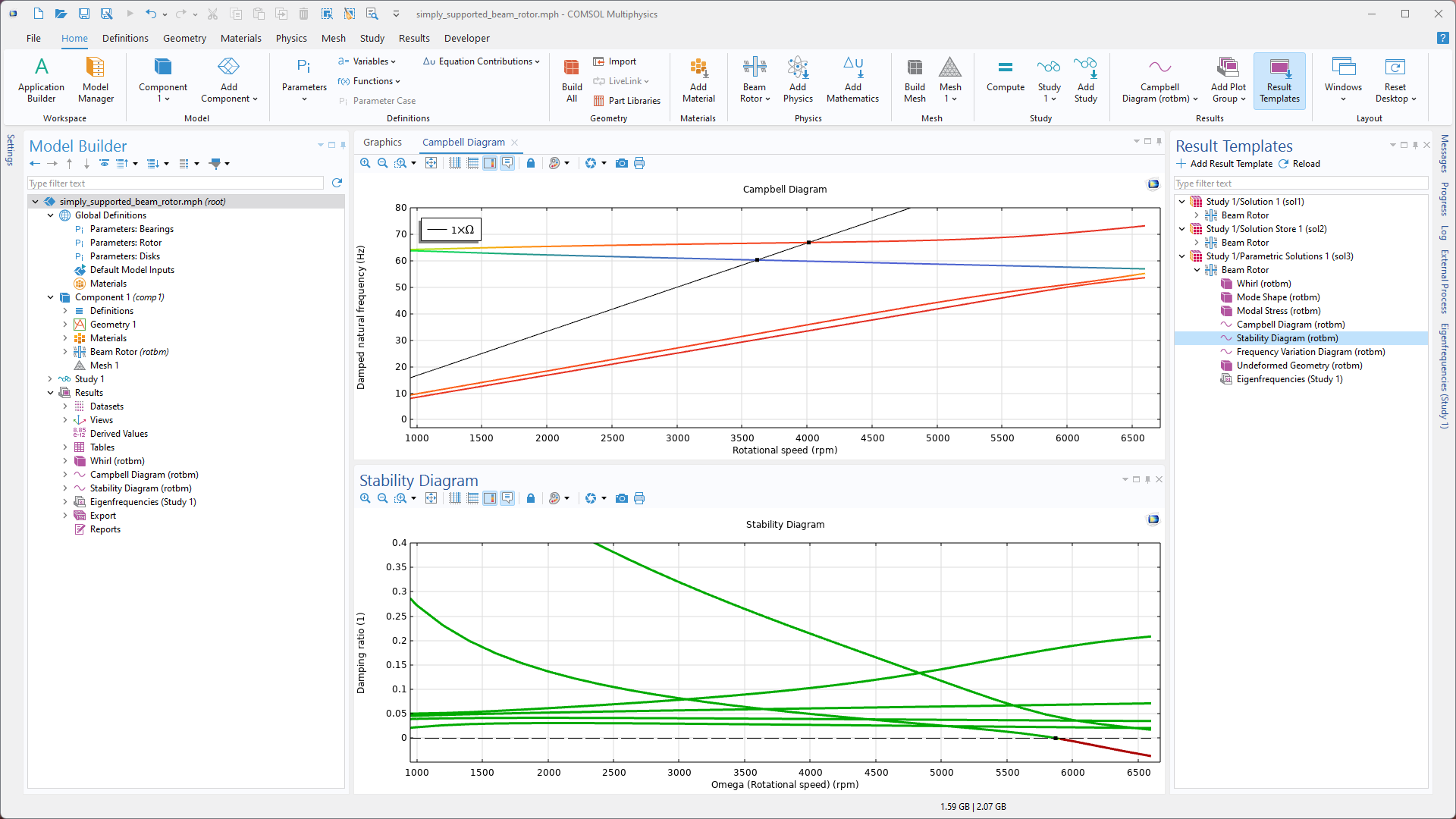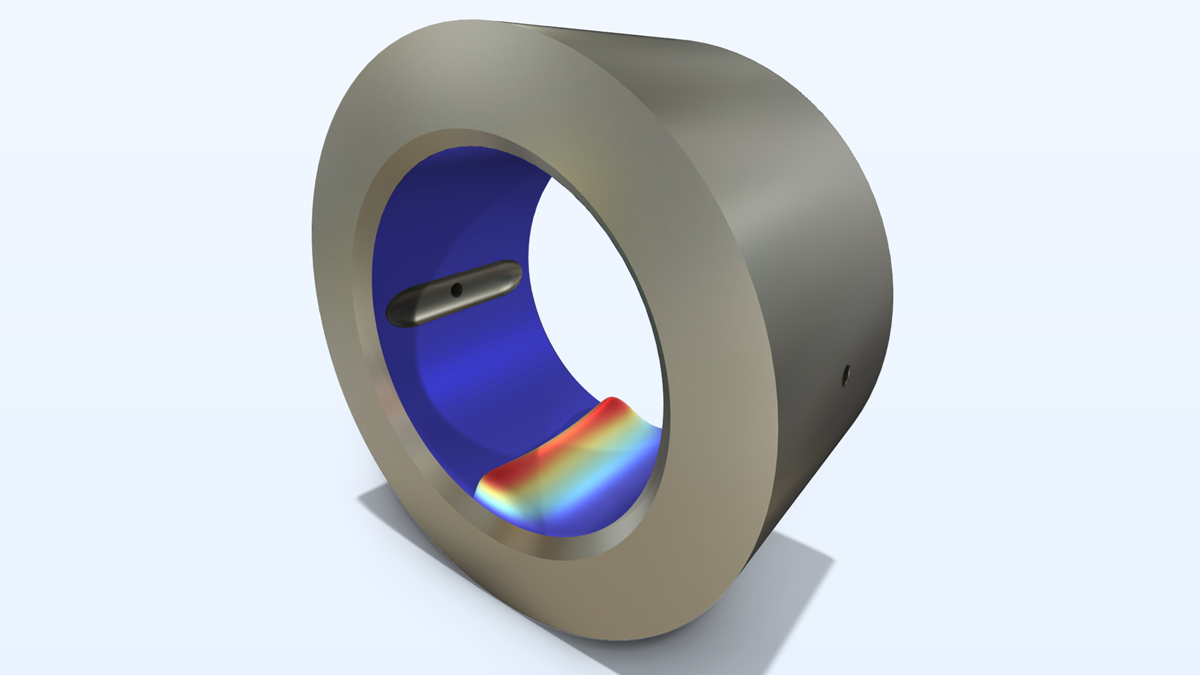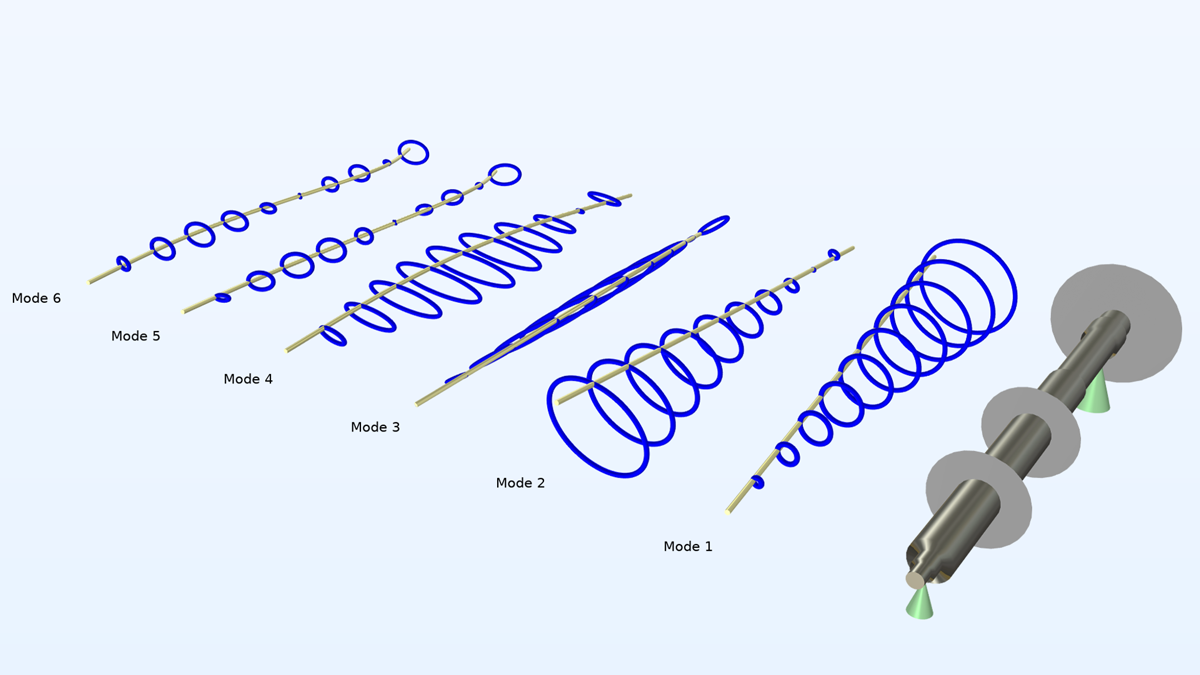Rotordynamics Module Updates
For Rotordynamics Module users, COMSOL Multiphysics® version 6.3 introduces enhanced functionality for dynamic coefficients in hydrodynamic bearings, new and updated plots in results templates, and performance improvements. Learn more about these updates below.
Dynamic Coefficients in Hydrodynamic Bearings
For the Hydrodynamic Bearing interface, stiffness and damping coefficients can now be determined with higher accuracy. The underlying perturbation method has been improved and is now applicable for the three fluid types: Liquid (Reynolds equation), Liquid with cavitation, and Gas (modified Reynolds equation). The improved formulation takes into account pressure dependencies of the fluid properties. You can see the improved functionality in the existing Evaluation of Dynamic Coefficients of a Cylindrical Journal Bearing and Damping Coefficients of a Squeeze Film Damper tutorial models.

New and Improved Results Templates
For the three rotor interfaces: Solid Rotor; Solid Rotor, Fixed Frame; and Beam Rotor, two new results templates, Stability Diagram and Frequency Variation Diagram, have been added for eigenfrequency study types. The Stability Diagram is useful for determining the stability threshold for a rotor system. The Frequency Variation Diagram can be a useful tool for performing sensitivity analyses. These results templates help to visualize how natural frequencies change with variations of a swept parameter. In addition, the Campbell Diagram has been redesigned for better readability. You can see these features in the following tutorial models:
- simply_supported_beam_rotor
- geared_rotors
- rotor_bearing_system_simulator
- campbell_plot_comparison
- coupled_rotors
- dual_rotors
Performance Improvements
In version 6.3, the performance of the Hydrodynamic Bearing interface has been significantly improved. More specifically, new solver suggestions have been added to the Hydrodynamic Bearing interface for Stationary and Time Dependent studies. With these improvements, the computation time is reduced by up to 50%.
New and Updated Tutorial Models
COMSOL Multiphysics® version 6.3 brings a new and an updated tutorial model to the Rotordynamics Module.




